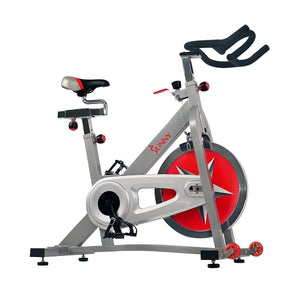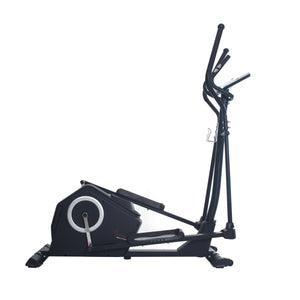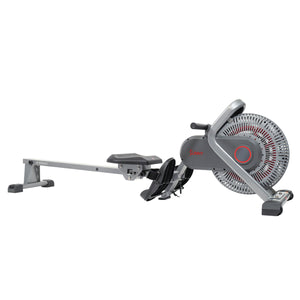Most of us have some general knowledge of healthy food choices, and foods we should avoid. A diet filled with fresh whole foods - fruits and veggies, unrefined whole grains, lean meat, and healthy fats - we’ve all heard it, right? However, sometimes it’s not as simple as just eating what you think is healthy.
For example, most of us would consider yogurt a healthy choice for breakfast or a snack. However, labeling on food items can be confusing. You might see on the front of a yogurt that it’s “low-fat” and assume it’s a healthy choice. However, just because a yogurt is marketed a certain way doesn’t always mean it’s healthy.
Differing brands and flavors of yogurt will have a range of calcium, added sugar, and protein content. In general, the healthiest yogurt choice will be low in added sugars, and high in protein and calcium. This is where knowing how to read a nutrition label comes in handy and can make making healthy choices a snap!
Understanding how to read a nutrition label will help you know if the content of what you’re eating is up to par with your health and nutrition goals, and help you make healthy swaps in your diet by making a few quick comparisons between the labels of similar products. Check out the tips in this article, to help make your food choices at the store a bit better!
1. Check the Serving Size
Did you know that all of the content on a nutrition label is referring to just one serving of whatever is within but, with most products, there are multiple servings within just one package?
The craziest to me is when a candy bar or a juice is 2-3 servings. I mean, if you open a drink, odds are, you plan to drink it all at once. If you’re planning on consuming more than one serving size, you’ll need to multiply the entire nutrition label by the number of servings you’ll be consuming.
So, let’s say you picked up a fruit juice at the store, and the bottle says it contains 2 servings. For an accurate representation of how many calories, grams of protein, carbs, fat, sugars, etc. you’re really getting when you drink the whole juice, you’ll need to multiply each of those values by 2 (i.e. double the calories, sugars, etc.).
2. Check the Calories
Checking the calories can be helpful in determining how much a particular food item will be contributing to your daily energy needs. Your calorie needs will vary based on height, weight, gender, activity level, and health goals.
Some foods can be very high in calories, but relatively low in nutrient-dense content (i.e. few healthy fats, proteins, vitamins, minerals, etc.). These are often called empty calories and can be found in prepackaged foods pumped with preservatives, sugars, fats, and salt. These foods will rack up your daily calories, without helping you feel full or satisfied, and can lead to weight gain when eaten in excess. That’s why it’s so important to have an eye for the nutrient content in your food and not just the calories.
3. Nutrients
The nutrients listed on nutrition labels are there to help you make the healthiest choice. Understanding what you’d like to limit, and what you’d like to maximize in your food choices will help you read this part of a nutrition label and make better sense of it. Comparing the nutrients in similar choices or different brands of a food item can help you make the healthiest choice possible.
Know What to Limit
Saturated fat, sodium, and added sugars are nutrients you may want to limit. High consumption of these items is linked to health complications, and Americans generally consume too much of them.
Added Sugars
When it comes to sugars, you’ll notice both total sugars and added sugars are listed. Total sugars include naturally occurring sugars such as those found in dairy or the naturally occurring sugar in fruits and vegetables. Added sugars will be those added during processing and are those you’ll want to avoid.
Know What to Maximize
Dietary fiber, protein, Vitamin D, Calcium, Iron, and Potassium are a few of the nutrients you’ll want to get more of in your diet. Many Americans fall short of getting enough of these in their diet, so make sure you’re not one of them.
Dietary Fiber
Dietary fiber is amazing for gut health and for promoting feelings of fullness and satisfaction throughout the day. Each nutrition label includes dietary fiber, check where your favorite snacks fall on the spectrum!
Protein
It’s also important when eating something with the intention of getting in some protein to make sure that item does in fact have a good amount of protein. Protein is incredible for satiety and an important nutrient in fueling your body, however, there’s a wide spectrum of where similar items fall for protein content.
For example, there are many plant-based foods available on the market. One would assume, especially if an item is marketed as a meat replacement, like a veggie burger, that it would have a comparable amount of protein to its meat counterpart. The truth is many veggie burgers have only 5 grams of protein, although some contain up to 21 grams in protein; meanwhile, a standard chicken breast is usually in the neighborhood of 40 grams. There are good options out there, but you have to know what you’re looking for!
Vitamins & Minerals
Finally, don’t forget those vitamins and minerals at the bottom. It’s easy to assume a general food item has the vitamins and minerals we would expect it to have. For example, a lot of people drink milk and eat yogurt for the calcium. Milk is pretty standard across the board for calcium levels, but yogurt can vary quite a bit. Another example where checking the label to see what you’re really getting makes a difference.
4. Daily Values
On the right-side panel of the chart, daily percentages are provided. These can be very helpful if you know how to use them. Basically, daily values tell you how much of one serving of that particular product is contributing to your daily totals based on a 2,000-calorie diet.
If your goal is 2,000 calories, it’s helpful because throughout the day, you can easily add up your percentages to see if you’re getting enough or too much of each of the nutrients. Just remember, you will need to multiply that Daily Value percentage by however many servings you’re eating.
5. Ingredients
Last but not least, the ingredient list. The ingredients are one of my favorite parts of the nutrition label to look at because I love having control over exactly what I put into my body. When you purchase pre-packaged items such as snacks, bars, yogurt, etc., checking the ingredients is a wonderful way to have control of what you eat.
In general, look for items that have fewer ingredients, the less added ingredients the better. It’s always a good sign when you actually recognize what the ingredients are. A good rule of thumb is to try your best to avoid unneeded additives - mysterious food dyes, chemicals, sweeteners, and preservatives which only add calories and usually aren’t great for you.
Finally, enjoy your food! This is a guide to help you make healthier choices, not obsess over every last detail. Use this knowledge to start choosing healthier options here and there. Maybe start by comparing your favorite crackers to other crackers at the store. Or, simply check the nutrition labels of favorite items in your cupboard, fridge, and freezer to get an idea of what’s up to par, and where you could make some improvements in your regular diet!
























Add Your Name & Email
Please enter your name and email to continue.We won’t display your email publicly.
3 comments
I am the editor for SCW Fitness Education (www.scwfit.com). We release three publications, Weekly Work-UP, Spotlite and Tidal Waves. I just wanted to inform you that I felt the article “How to Understand Nutrition Labels” written by Sydney Eaton and published on the Sunny Health and Fitness website was important enough to be included in our latest edition of Weekly Work-UP with a link to the original article. It was released to over 70K readers in our database. Thanks for sharing this article and for providing business, health and fitness resources to the community. If we can be of any assistance to you, please do not hesitate to reach out. Thank you again for your support.
Thank you for the above information. Very helpful and a good reminder.